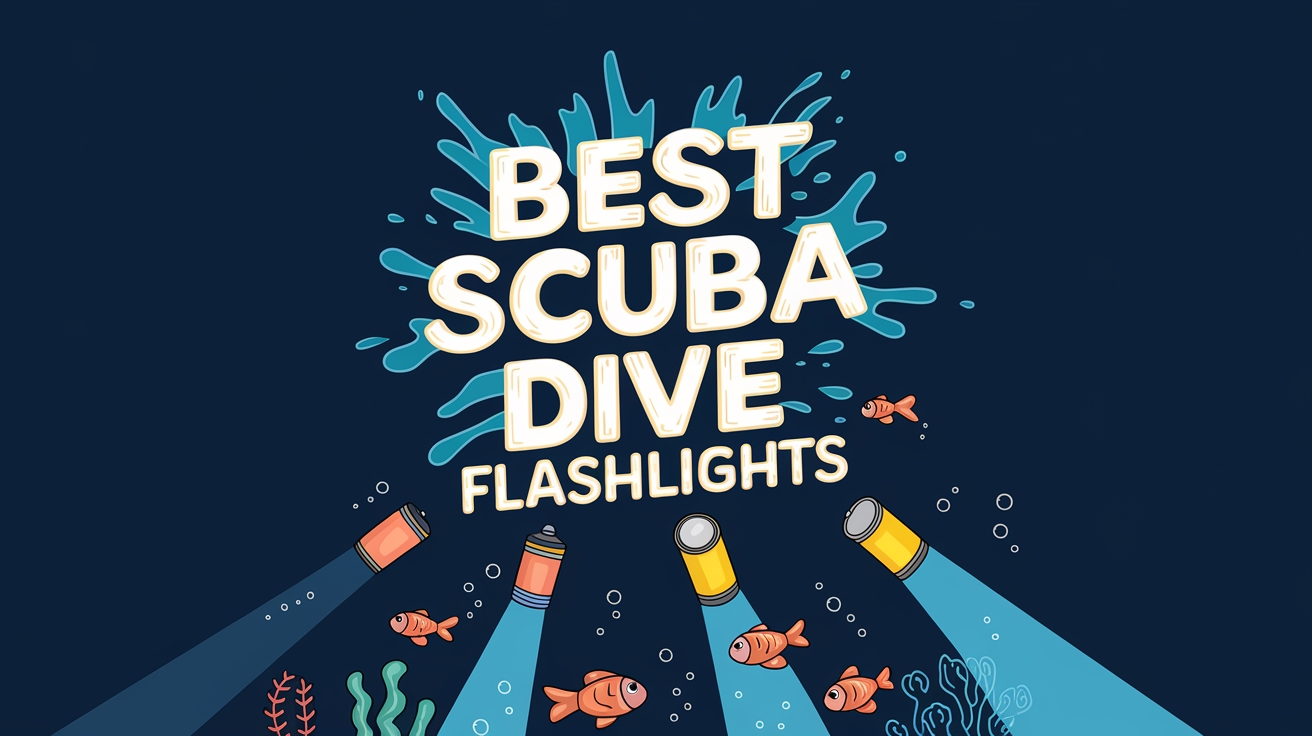For many diving enthusiasts who need vision correction, contact lenses offer both benefits and challenges. While these small aids can enhance underwater clarity, they also require careful consideration. From selecting the right type of lenses to following important safety guidelines, understanding the associated risks and exploring alternatives can greatly influence both safety and enjoyment during your underwater experiences. Familiarizing yourself with these key aspects will help you make informed decisions for your aquatic adventures.
Key Takeaways
- Daily disposable contact lenses are the safest choice for underwater activities, reducing the risk of infections and eliminating the need for cleaning.
- Always use a well-fitted diving mask that seals properly to keep water away from your lenses.
- Close your eyes when adjusting your mask or when water gets in to prevent your lenses from moving.
- Bring spare contact lenses and solution in a waterproof case for emergencies during diving trips.
- Consider prescription dive masks as a safer option for vision correction while underwater.
Benefits of Underwater Vision Correction
Underwater vision correction can greatly enhance the snorkeling experience for those with vision challenges. Contact lenses offer a practical way to improve sight underwater, allowing snorkelers to fully enjoy marine life, read instruments, and keep track of companions. Unlike prescription snorkel masks, which can be pricey and restrictive, contact lenses provide flexibility and convenience for clear vision.
Effective vision correction helps snorkelers navigate confidently, spot hazards, and observe intricate details of coral reefs and marine creatures. They can easily read depth gauges and pressure indicators, which is essential for safe diving practices. This enhanced clarity also benefits underwater photography, enabling photographers to better frame their shots and focus on fine details.
Moreover, clear vision aids in maintaining spatial awareness, making it easier to judge distances and position oneself relative to other snorkelers, boats, and underwater structures. This improved visual ability contributes to a more relaxed and enjoyable snorkeling experience while supporting safety.
Risks and Safety Concerns
Wearing contact lenses while diving presents several health risks that swimmers should be aware of. The combination of lenses and diving masks can lead to complications, especially if water gets into the mask or during pressure changes at different depths.
| Risk Factor | Potential Consequence |
|---|---|
| Contaminated Water | Eye infections, bacterial exposure |
| Pressure Changes | Lens displacement, corneal irritation |
| Mask Flooding | Lens dislodgement, vision impairment |
| Extended Wear | Reduced oxygen to cornea, discomfort |
Swimmers need to pay close attention to the mask’s seal. Any water intrusion can trap harmful microorganisms between the lens and the eye, increasing the risk of infections. Changes in underwater pressure can cause lenses to fit differently on the eye, leading to discomfort or vision problems. Additionally, prolonged exposure to saltwater or chlorinated water that enters behind the mask can damage lenses and irritate the eyes.
To reduce these risks, diving professionals often suggest alternative vision correction options, such as prescription dive masks or daily disposable lenses that can be thrown away right after the dive.
Hard vs Soft Lenses
Different contact lens materials behave differently underwater, making the choice between hard and soft lenses important for diving. Hard contact lenses, also known as rigid gas permeable (RGP) lenses, maintain their shape under pressure and do not absorb water, providing consistent vision while diving. However, their rigid design can make them more likely to shift during mask clearing or if water enters the mask.
Soft contact lenses provide better comfort and stability underwater, as they mold to the shape of the eye and are less likely to move out of place. Their flexible material can absorb water, which may trap harmful bacteria against the eye. Prolonged exposure to saltwater can cause soft lenses to tighten, while chlorinated pool water may lead to lens drying out. Many divers prefer daily disposable soft lenses, which can be thrown away after each dive, reducing the hassle of maintenance and lowering the risk of infection. When selecting lenses, consider how often you dive, the type of water, and your comfort preferences.
Essential Safety Precautions
To ensure safe plunging with contact lenses, several important precautions should be followed. Always have a backup pair of prescription goggles or glasses on hand in case of lens issues. Before going underwater, check that your mask fits well and forms a complete seal around your eyes to keep water out.
Using artificial tears or rewetting drops before diving can help keep your lenses comfortable and minimize irritation from salt water. Avoid opening your eyes underwater without your mask, as this can move your lenses and expose your eyes to harmful germs. If water gets into your mask, don’t blink quickly or rub your eyes; clear your mask using proper techniques.
After each dive, remove and clean your contact lenses with fresh solution, even if you plan to dive again later. Daily disposable lenses are a good choice for diving, as they reduce the chance of bacteria buildup and ensure cleanliness. Always follow your eye care professional’s advice regarding lens use while diving and schedule regular check-ups to monitor your eye health.
Alternative Vision Solutions
Underwater explorers who face challenges with contact lenses have several effective options for clear vision. Prescription dive masks provide an easy solution, featuring corrective lenses integrated into the mask. These masks can be tailored to various prescriptions, including bifocal and progressive designs, ensuring clear visibility without the hassle of contacts.
For those looking for flexibility, mask inserts are a practical choice. These removable lenses fit inside a standard dive mask, allowing multiple users to share the same mask by swapping inserts. Additionally, laser eye surgery offers a long-term fix, removing the need for any eyewear while diving.
Some divers prefer daily disposable contact lenses for their dives, which help reduce infection risks compared to long-wear lenses. For individuals needing stronger vision correction, custom-made prescription goggles offer good clarity and comfort. These options often come with anti-fog coatings and UV protection, ensuring reliable performance during dives. Each alternative caters to specific needs, allowing divers to concentrate on exploring the underwater world.
Tips for Contact Lens Divers
Explorers wearing contact lenses underwater should follow safety practices to protect their eyes and maintain clear vision. By taking proper precautions, swimmers can minimize the risk of eye irritation, infection, or lens displacement.
- Always wear a well-fitted mask that seals around the eyes to prevent water from entering and dislodging lenses.
- Use daily disposable lenses when possible, as they reduce the need for cleaning and lower infection risks associated with reusable lenses.
- Keep eyes closed when taking off the mask underwater, and avoid rubbing them even if irritation occurs.
- Carry a backup pair of contact lenses in a waterproof case, along with lens solution for emergencies.
Swimmers should also check their mask for a proper fit before entering the water and consider using artificial tears for added comfort. It’s important to be aware that different depths and pressure changes can affect lens comfort, allowing for a quick response to any vision-related issues.


